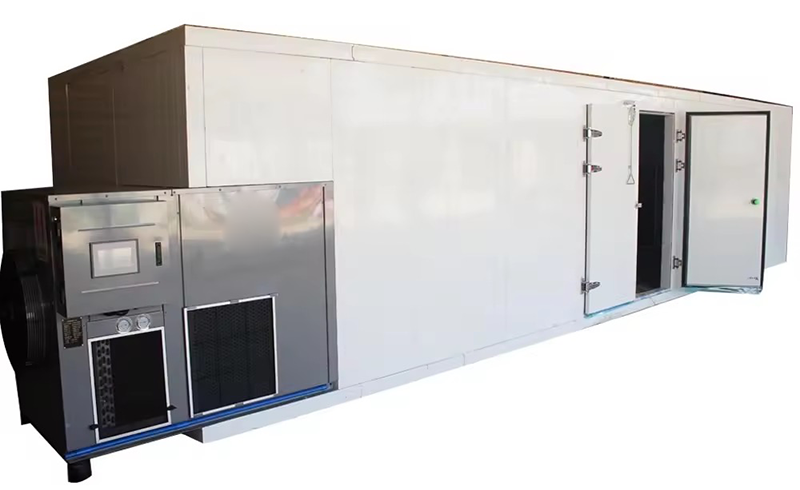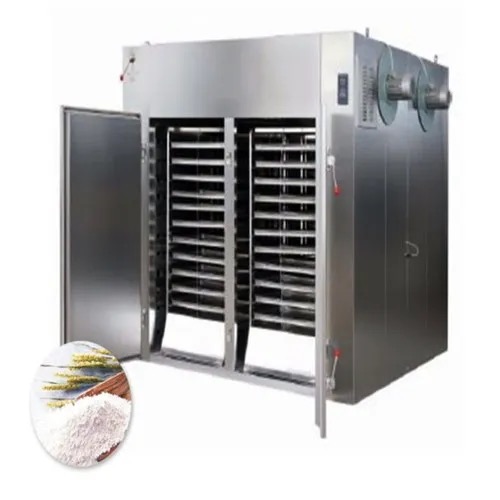
Content Menu
● Understanding Heat Pump Dryers
>> Key Features of Heat Pump Dryers:
● Disadvantages of Heat Pump Dryers
● Impact on Food Drying Processes
● Technical Limitations
● Environmental Considerations
● Alternatives to Heat Pump Dryers
● Best Practices for Food Drying
● Conclusion
● FAQs
>> 1. What is a heat pump dryer?
>> 2. How do heat pump dryers compare to traditional dryers?
>> 3. What maintenance do heat pump dryers require?
>> 4. Can I use a heat pump dryer for food drying?
>> 5. Are there alternatives to heat pump dryers for food processing?
● Citations:
Heat pump dryers have gained popularity due to their energy efficiency and compact design, making them an appealing choice for many households. However, they come with a set of disadvantages that potential users should consider. This article will explore the cons of heat pump dryers, particularly in the context of food drying applications, as well as provide insights into the broader implications for food processing and preservation.

Understanding Heat Pump Dryers
Heat pump dryers operate by using a refrigeration cycle to remove moisture from clothes or food items. They recycle warm air, which is less energy-intensive compared to traditional dryers that expel hot air outside. While this technology is beneficial for energy conservation, it has its drawbacks.
Key Features of Heat Pump Dryers:
- Energy Efficiency: Uses less electricity than conventional dryers.
- Compact Design: Can be placed in smaller spaces without the need for external venting.
- Gentle Drying: Operates at lower temperatures, reducing the risk of fabric damage.
Disadvantages of Heat Pump Dryers
Despite their advantages, heat pump dryers have several notable disadvantages:
- Longer Drying Times: Heat pump dryers typically take longer to dry items compared to traditional dryers. This can be particularly challenging in commercial food drying applications where time is critical. Drying times can extend by 15 to 30 minutes or more, depending on the load and moisture content.
- Higher Initial Cost: The purchase price of heat pump dryers is generally higher than that of conventional models. This initial investment can be a barrier for small businesses or individuals looking to enter the food drying market.
- Maintenance Requirements: Regular maintenance is necessary to keep heat pump dryers operating efficiently. Lint and moisture can accumulate in filters and coils, leading to potential issues if not addressed. Failure to maintain these components can result in longer drying times and increased repair costs.
- Risk of Mold Growth: Since heat pump dryers generate moisture during operation, there is a risk of mold development if water leaks or accumulates in the unit. This can pose health risks and affect the quality of dried foods.
- Limited Load Capacity: Many heat pump dryers have smaller drum capacities compared to traditional dryers. This limitation can hinder large-scale food drying operations where bulk processing is essential.
Impact on Food Drying Processes
In the context of food drying, these disadvantages can significantly affect operational efficiency and product quality. Here are some specific considerations:
- Extended Processing Times: For businesses that rely on quick turnaround times for dried products, the longer drying cycles associated with heat pump technology may not be feasible.
- Increased Operational Costs: Although heat pump dryers are energy efficient, the longer processing times could lead to higher labor costs and increased energy consumption over time.
- Quality Control Challenges: Maintaining consistent quality in dried foods is crucial. The variability in drying times and potential for moisture retention can lead to inconsistent product quality.
Technical Limitations
Heat pump dryers also come with technical limitations that may impact their effectiveness in specific applications:
- Temperature Sensitivity: Certain foods require precise temperature control during drying to preserve flavor, color, and nutritional value. Heat pump dryers may struggle to maintain these specific temperatures consistently throughout the drying process.
- Moisture Removal Efficiency: While heat pump dryers are designed to remove moisture effectively, their performance can be influenced by environmental conditions such as humidity levels. High ambient humidity can lead to inefficient drying processes and extended cycle times.
- Noise Levels: Some users report that heat pump dryers can be noisier than traditional models due to the compressor operation. This may be a concern in residential settings or small commercial spaces where noise levels need to be minimized.

Environmental Considerations
While heat pump dryers are often marketed as environmentally friendly due to their energy efficiency, there are other environmental factors to consider:
- Refrigerant Use: Heat pump dryers use refrigerants that can have a significant environmental impact if not managed properly. Leaks during operation or disposal can contribute to greenhouse gas emissions.
- Energy Source Dependency: The overall environmental impact of a heat pump dryer depends on the source of electricity used. If powered by fossil fuels, the environmental benefits may be diminished compared to renewable energy sources.
Alternatives to Heat Pump Dryers
Given the drawbacks associated with heat pump dryers, it may be worthwhile to explore alternative drying methods:
- Conventional Dehydrators: These devices often provide faster drying times and are specifically designed for food applications. They can handle larger loads and may be more cost-effective for certain operations.
- Solar Drying: Utilizing solar energy for food drying can be an environmentally friendly alternative; however, it depends heavily on weather conditions and may not be suitable for all types of food products. Solar dehydrators are particularly effective in sunny climates but require careful monitoring to avoid spoilage from unexpected weather changes.
- Microwave Drying: This method provides rapid drying times but may require specialized equipment and careful monitoring to avoid over-drying or uneven results. Microwave drying is suitable for small batches but may not be practical for larger operations due to equipment costs.
Best Practices for Food Drying
To maximize efficiency and product quality when using any type of dryer, including heat pump models, consider implementing best practices:
- Pre-Treatment Techniques: Pre-treating foods before drying—such as blanching vegetables or soaking fruits—can enhance flavor retention and improve texture after drying.
- Batch Sizes: Optimize batch sizes based on the dryer's capacity and performance characteristics. Avoid overloading units as this can lead to uneven drying and compromised product quality.
- Monitoring Moisture Levels: Use moisture meters or hygrometers to monitor moisture levels during and after the drying process. This ensures that products reach safe moisture content levels for storage without compromising quality.
Conclusion
While heat pump dryers offer significant benefits in terms of energy efficiency and compact design, their disadvantages—such as longer drying times, higher costs, maintenance needs, mold risks, limited capacity, technical limitations, and environmental considerations—pose challenges for both residential users and commercial food processors. Businesses must weigh these factors carefully when considering equipment options for food drying applications.
The decision on whether to use a heat pump dryer ultimately depends on specific operational needs, budget constraints, and desired product outcomes. For some users, the benefits may outweigh the drawbacks; however, for others—especially those focused on high-volume production or rapid processing—alternative methods may provide better results.

FAQs
1. What is a heat pump dryer?
A heat pump dryer is an energy-efficient appliance that uses a refrigeration cycle to remove moisture from clothes or food items while recycling warm air within the unit.
2. How do heat pump dryers compare to traditional dryers?
Heat pump dryers are generally more energy-efficient but take longer to dry items compared to traditional vented dryers. They also have higher initial costs but lower operating expenses over time.
3. What maintenance do heat pump dryers require?
Regular maintenance includes cleaning lint filters and ensuring that condenser coils are free from debris to maintain optimal performance and prevent mold growth.
4. Can I use a heat pump dryer for food drying?
Yes, while they can be used for food drying, their longer drying times and potential moisture issues may make them less suitable compared to dedicated food dehydrators or conventional methods.
5. Are there alternatives to heat pump dryers for food processing?
Yes, alternatives include conventional dehydrators, solar drying methods, and microwave drying techniques, each with its own advantages and limitations based on specific needs.
Citations:
[1] https://www.familyhandyman.com/article/heat-pump-dryer/
[2] https://www.linkedin.com/pulse/what-advantages-using-food-dryer-ella-huang
[3] https://www.tutorialspoint.com/food-drying-purpose-methods-pros-and-cons
[4] https://www.istockphoto.com/photos/fruit-dryer
[5] https://www.youtube.com/watch?v=9DSGcVhjHEc
[6] https://www.youtube.com/watch?v=5vE0ILAYDGw
[7] https://www.aztecappliance.com/blog/pros-cons-of-heat-pump-dryer
[8] https://airtekdehydrator.com/health-advantages-using-food-dehydrator/
[9] https://www.dreamstime.com/photos-images/food-dehydrator.html
[10] https://www.youtube.com/watch?v=mtDzdYoyeR8
[11] https://www.savemoneycutcarbon.com/learn-save/heat-pump-tumble-dryers-all-you-need-to-know/











